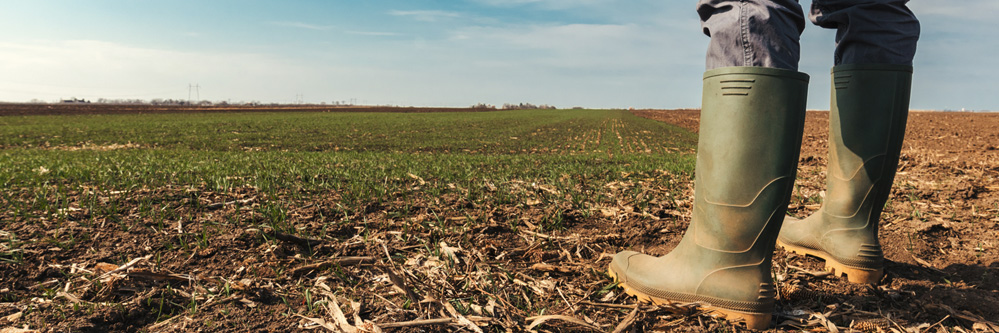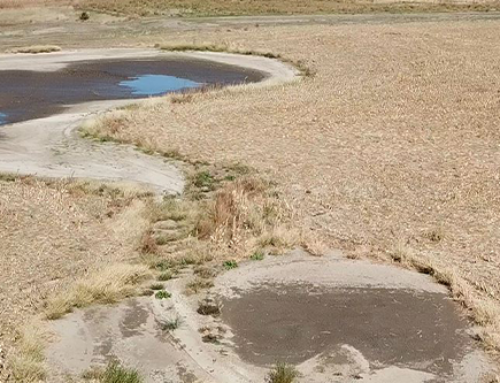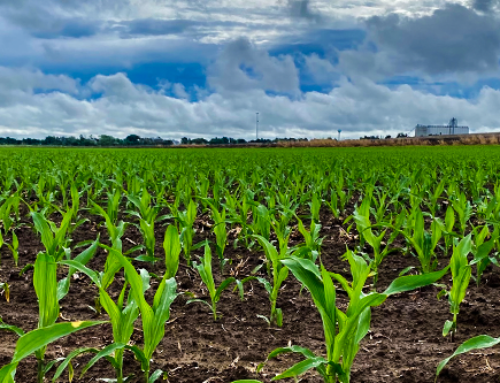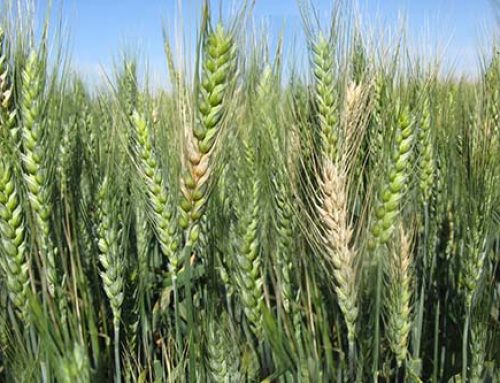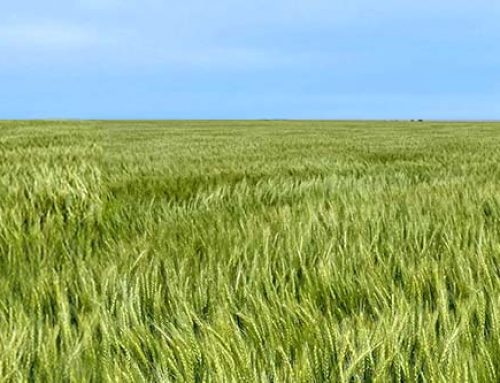STILLWATER, OK – Normally this time of year the nitrogen and wheat seed is flowing. But the dry spell has a lot of the central plains wheat producers in a holding pattern. And right now many of the grain only producers are looking at soil test results to help make nutrient plans for Oct sown wheat.
Well the map below is the 24 inch fraction water index (8.24.22) and it tells the story of a dry soil to a significant depth. I wish I could say that below two feet we had good moisture. But, I would be lying.
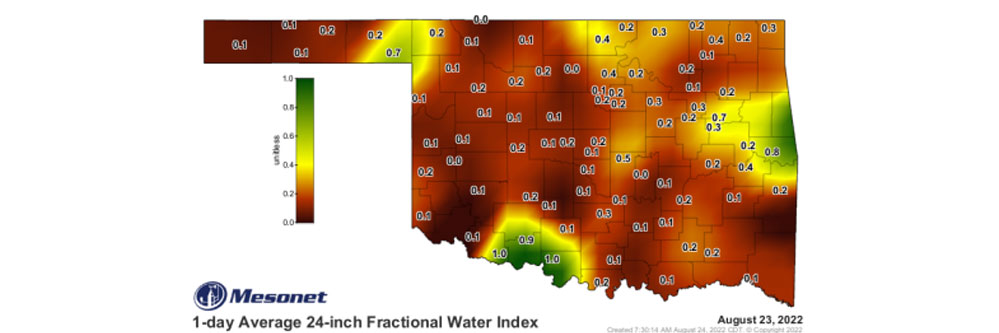
Since June (see the soil moisture data below) we have been drying our soil to a significant depth. While the drying is a big story its not the one I am here to talk about. It is what has happened because of drying.
The soil is filled with mobile and immobile nutrients. Mobile nutrients move with soil moisture. That is why we suggest to take deep soil samples, for deep rooted crops like cotton and corn, before making nitrogen decisions. I have sampled a lot of fields over my career and seen a lot of very high nitrogen (NO3) and sulfur (SO4) values in the 18-36 inch depths. Well during June and July evaporation in fallow ground and evapotranspiration is cropped ground (or weedy ground) has been pulling moisture to the soil surface from the depths. This moisture moving up to the surface has brought all the mobile nutrients with it. Combine the movement via evapotranspiration by the lack of crop production (winter and summer) and we are seeing some VERY high NO3 values.
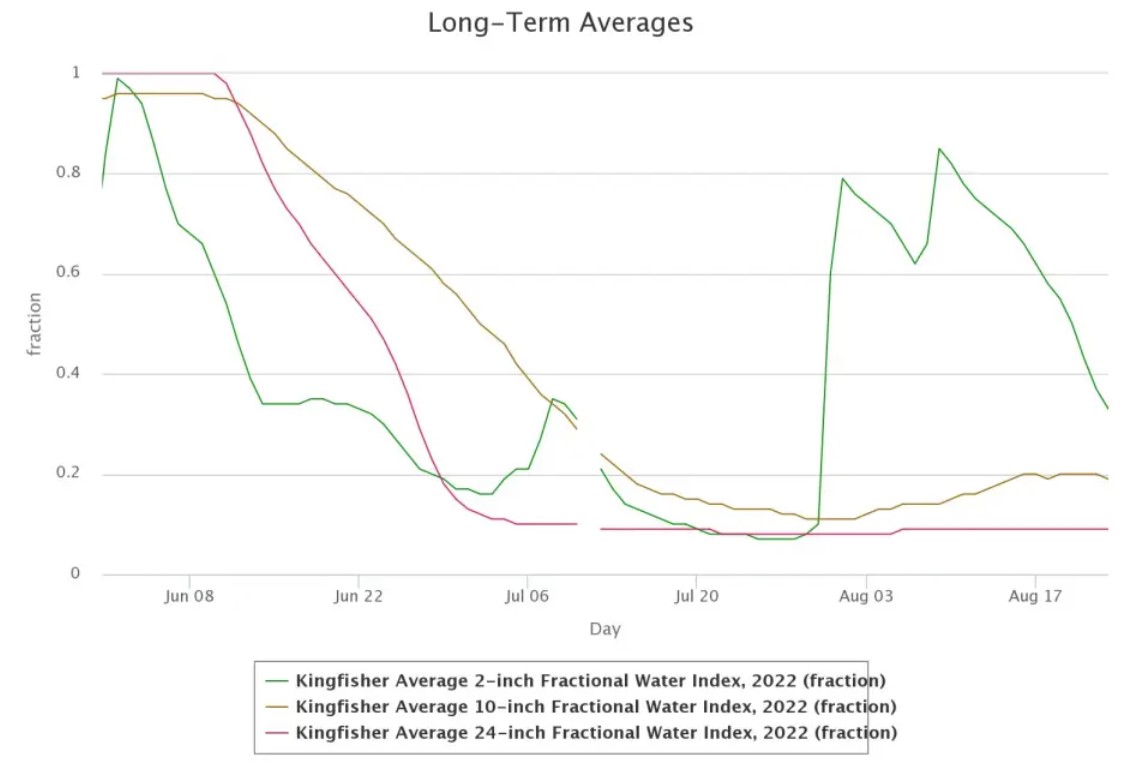
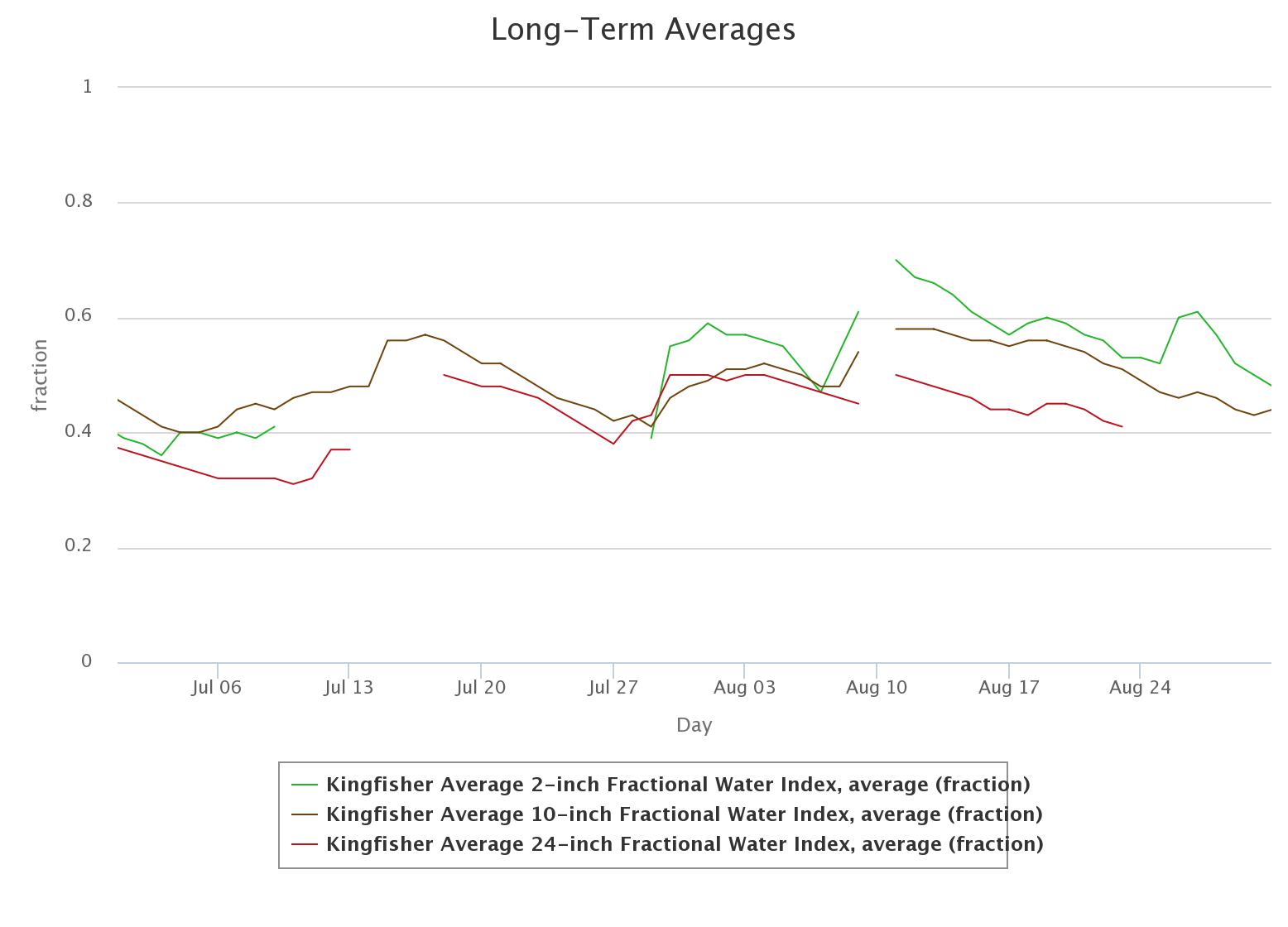
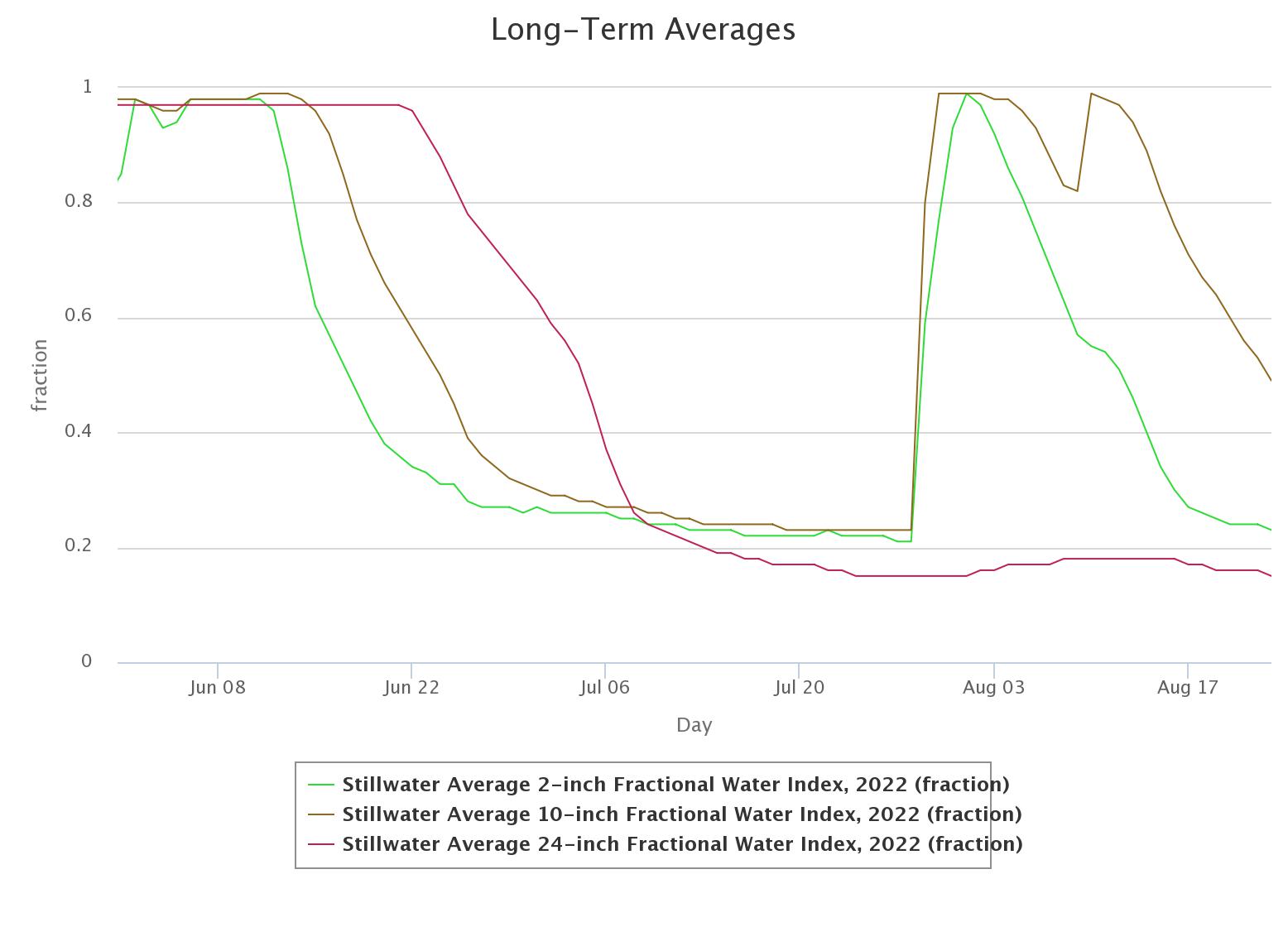
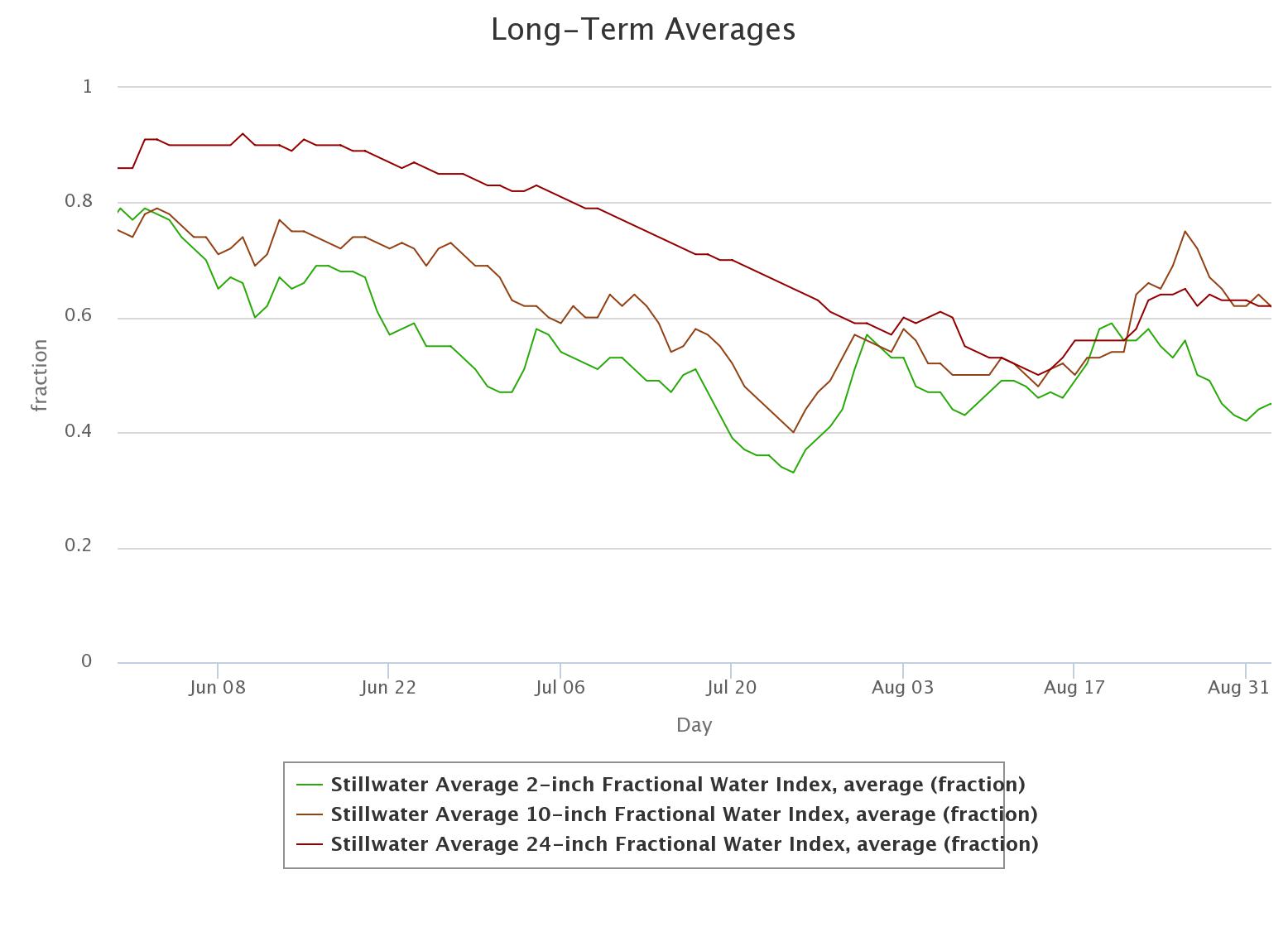
So what does that mean. Yes, there is a lot of residual N. Yes, I would agree that there is little need for pre-plant, although I have said regardless the conditions, see Is there still time for nitrogen. Does this mean I wont need any N, sorry you probably will. Why? This is where the Nitrogen Cycle and more correctly the Organic Matter Cycle comes into the picture. If you look above and see the long term soil moisture averages you’ll note most of June-Aug has 0.4 or better. our current track is not as pleasant. That means the system has not been functioning as normal due to lack of moisture. The system I am referring to is the microbial system. In an average year the soil microbial community is busy breaking down straw, roots, and residue over the summer months. When plant material high in carbon, low in nitrogen (like wheat straw) breaks down, the microbial community that is doing the work needs N. They get this N from the soil environment, and we not talking a pound or two, we are talking 20-80 pounds depending on residue load and type. But the microbes need moisture to do this and they have been without. So the immobilization portion of the N-cycle as yet to take full effect.
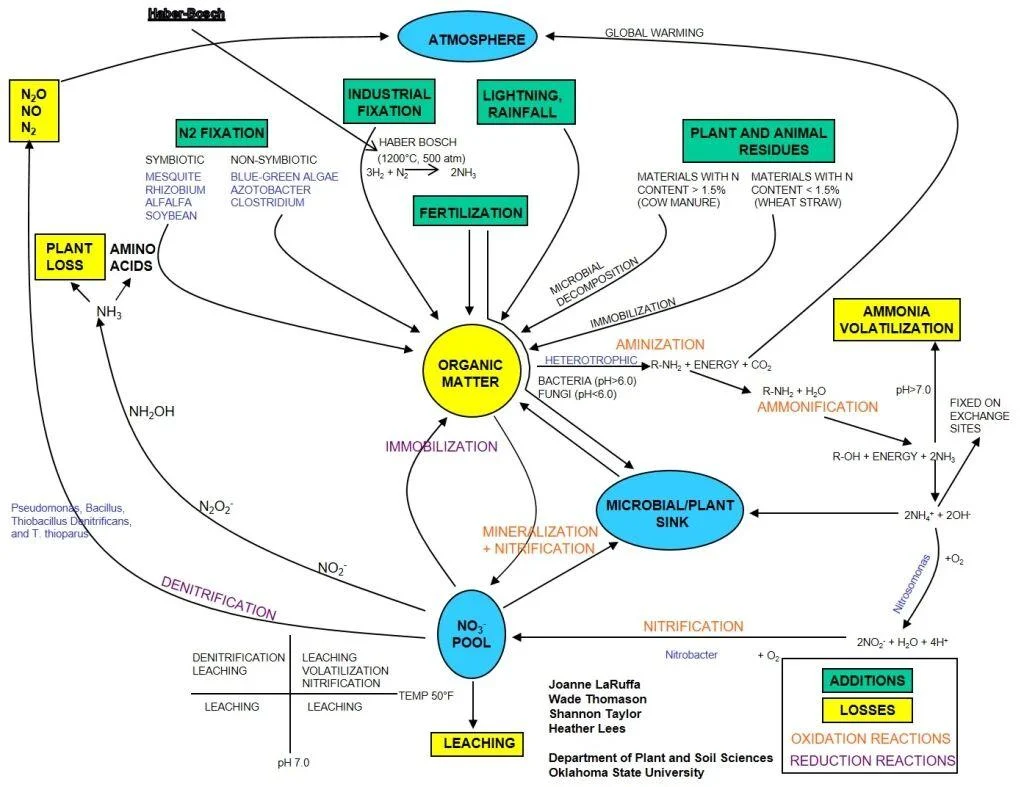
The last time I saw conditions like this I was working in a wheat field that the year before had 80 bpa wheat cut but had 80 lbs of N in the 6? preplant soil sample. When sowing the my crop I noted there was still a ton of residue left in the soil that had not broken down over the very dry summer. Well the fall was beautiful, great rains and warm temperatures. By Thanksgiving the crop was yellow and the N-Rich strip showing up really well. A soil sample taken Dec 1 showed there was only 5 lbs of N left in the soil, by my estimate the crop had only used 30. It was the microbes tyeing up the rest.
I was asked at a field day, would the immobilized N be mineralized and made plant available. That answer is easy Yes. Then I was asked when and that answer is tough unless you can predict the weather. The cycle is dependent upon moisture and soil temp. Warm wet fall/winter means better chance for early spring mineralization. Dry and or very cold winter looking at a delayed release. Also the spring weather pattern will influence the release. So here are my thoughts on what to do.
First: Given the lack of subsoil moisture at the time of this blog, I see little reason for any plant N to be applied in grain only wheat. For the forage systems I’d keep it at or under 50 lbs until we build our moisture profile.
Second: Do not forgo the in-furrow. A good root system could be critical this season, so make sure your Phosphorus is taken care of. If you ground is marginally acidic 6.0 or less this is even more important.
Third: If I’ve said it once I’ve said it one hundred times. PUT OUT N-Rich strips. Even if you don’t plan to use use the online tool, a consultant or a service provider, putting a strip out in your field will provide SO much information about what your crop and soil is experiencing. All about N-Rich Strips.
Fourth: If wheat is in a tug of wag match with microbial community, the microbes win. This is by no means a bad thing, but the numbers we see today, will not be indicative of what’s available once the N-Cycle kicks back into gear.
Thanks to the Oklahoma Mesonet for always having just the graphs I need.
Questions or comments please feel free to reach out.
Written by: Brian Arnall b.arnall@okstate.edu
– OSUNPK
